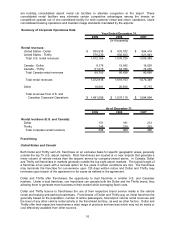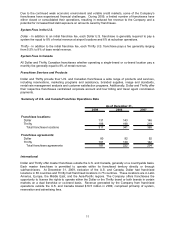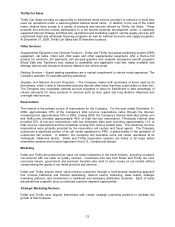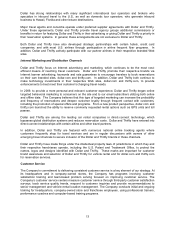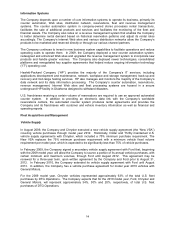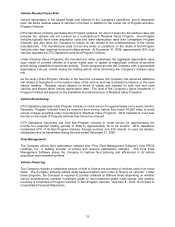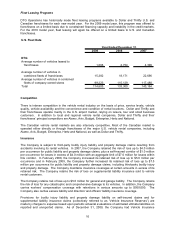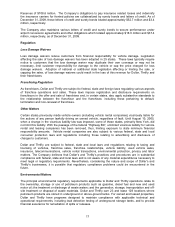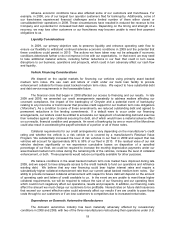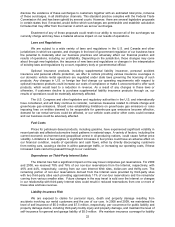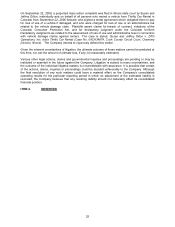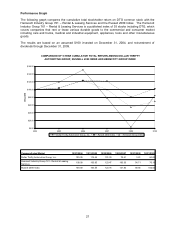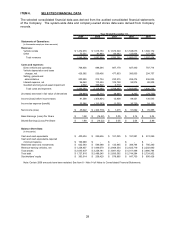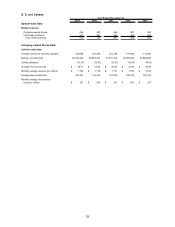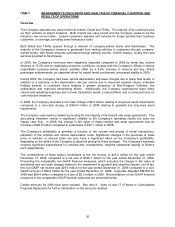Thrifty Car Rental 2009 Annual Report Download - page 21
Download and view the complete annual report
Please find page 21 of the 2009 Thrifty Car Rental annual report below. You can navigate through the pages in the report by either clicking on the pages listed below, or by using the keyword search tool below to find specific information within the annual report.bankruptcy laws. Historically, Chrysler has been our principal vehicle supplier and, while we have
diversified our suppliers as part of our 2010 vehicle ordering cycle, we will remain highly dependent on
the domestic automotive manufacturers with approximately 84% of our 2010 orders attributable to Ford,
Chrysler and General Motors. It remains uncertain whether actions by these companies, coupled with the
impact of federal assistance they have received and other governmental stimulus programs will be
sufficient to withstand continued pressures on the domestic automotive manufacturers.
We have exposure to these manufacturers in three primary areas: their ability to manufacture
and deliver vehicles to us in a timely manner for use in our operations; the level of residual values of their
vehicles in the overall used vehicle market, which could be adversely impacted by negative public
perception regarding their products or financial prospects and in turn affect our vehicle depreciation costs
and collateral requirements; and their ability to meet financial obligations to us for Residual Value
Programs and other purchase-related incentives. If any of these companies experiences significant
financial difficulties, fails to meet its financial or supply obligations to us, or is forced to seek protection
under applicable bankruptcy laws, our results, financial position, cash flow and prospects could be
materially adversely affected.
Highly Competitive Nature of the Vehicle Rental Industry
In addition to local and regional vehicle rental companies, the vehicle rental industry primarily
consists of eight major brands, all of which compete intensely for rental customers based on price and
service. The Internet has increased brand exposure and gives more details on rental prices to
consumers and increases price competition, requiring companies to be highly competitive in pricing in
order to attract consumers. In addition to consumer demand, pricing in the industry is significantly
impacted by the size of the rental fleets and the supply of vehicles available to consumers in the market.
While we have achieved improvements in our pricing as part of our strategic focus on return on assets in
addition to the overall fleeting actions taken by the industry to balance supply with demand, we cannot
provide assurance that we will continue to realize improved pricing or whether our attempts to do so will
further adversely affect transaction days. A significant increase in the supply of rental vehicles available
in the market due to fleet actions taken by our competitors, or actions by our competitors to significantly
reduce their prices in order to increase market share could negatively affect our pricing and other
operating plans in material ways and adversely affect our results and prospects.
Risks Relating to Event of Bankruptcy with Respect to the Monolines
Our obligations under our asset backed medium term notes are supported by the Monolines,
which have faced significant financial challenges and credit downgrades as a result of constrained
financial markets. The Monolines have undertaken significant restructuring actions and the financial
guaranty industry as a whole continues to face substantial pressures. An event of bankruptcy with
respect to any of the Monolines could trigger an amortization of our obligations under the affected
medium term notes, which would require a more rapid repayment of those notes, and could also (subject
to certain conditions) result in cross-defaults under certain of our other financing agreements. Although
conditions in the asset backed credit market have improved in recent months, there is no assurance that
those conditions will continue or that we would be able to access the markets in a timely manner in order
to refinance the affected notes, and if we are unable to do so, we would need to take immediate action to
preserve our operations. These actions could include further extending the holding period of our vehicles
to maximize their useful life prior to sale, as well as further reductions of our operations and workforce.
These and other actions we may take may not be successful to enable us to meet our obligations under
the affected notes and, even if successful, they would likely have an adverse affect on our results and
cash flow available to fund ongoing operations. If we curtailed our operations, our ability to compete
effectively would also be adversely affected.
Exposure to Used Vehicle Market Conditions
We retained the used car market value risk on approximately 95% of our vehicles at December
31, 2009 and expect that risk vehicles will account for approximately 90% to 95% of our fleet in 2010.
The depreciation costs for these vehicles are highly dependent on used car prices at the time of sale,
requiring us to make assumptions regarding the age and mileage of the vehicles at the time of disposal,
as well as the general used vehicle auction market. The costs of our risk vehicles may be materially
affected by the relative strength of the used car market, particularly the market for one to two year old
used cars. A decline in the prices at which we sell risk vehicles could have an adverse impact on our fleet
20


